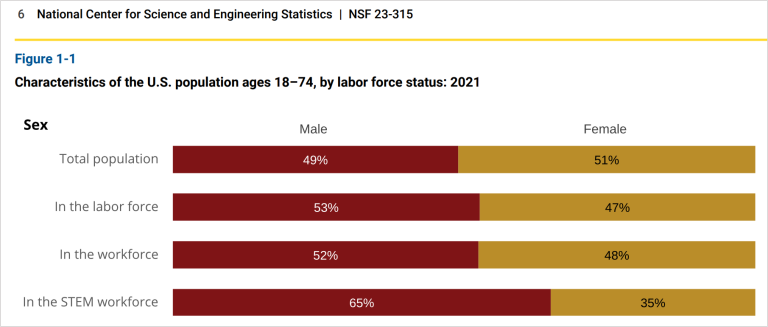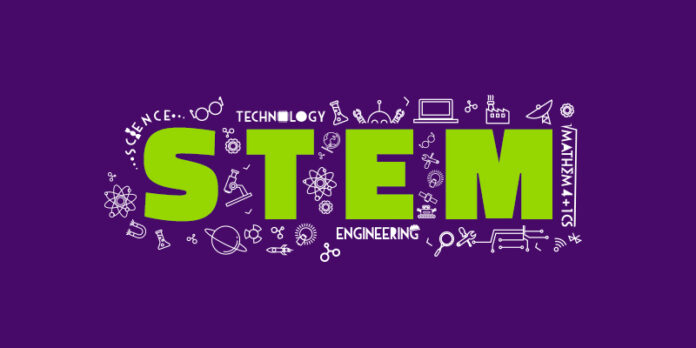Science, technology, engineering, and mathematics (STEM) the National Centre for Science and Engineering Statistics (NCSES)’s 2023 “Diversity in STEM” report indicates that the gender gap in STEM jobs is decreasing. STEM jobs have traditionally been dominated by men.
The report, which is published every two years, defines the “STEM workforce” as those with at least a bachelor’s degree, as opposed to the “skilled technical workforce, including workers with a high level of technical knowledge but without a bachelor’s degree.” It does not include a non-binary category.
More Women in STEM Jobs
The most recent data shows women are taking on STEM positions at a faster rate than men. “Between 2011 and 2021, the number of women in the STEM workforce increased 31%, from 9.4 million to 12.3 million,” says the NCSES. “For men, 22.6 million were employed in STEM occupations in 2021, up 15% from the 19.7 million employed in 2011.”
Women’s participation in the STEM workforce has increased by 3% as a consequence of this rapid growth, rising from 32% in 2011 to 35% in 2021 (it was just 8% in 1970). However, men still outnumber women in technical positions, accounting for 65% of all STEM positions.
Income Disparity in STEM
That means men are still making most of the money in these industries. “Employment in science, technology, engineering, and mathematics (STEM) has a positive impact on the pocketbook,” says the NCSES. “STEM workers had median wage and salary earnings of about $64,000, higher than the $40,000 earned by those working in non-STEM occupations.”

Additionally, women in STEM professions make less money than men do. In one of these jobs, the average yearly pay for men is $64,998, compared to $59,931 for women. There are significant differences in pay between races and disability status as well as the gender pay gap.
The best earning STEM occupations are Asian ($91,914), White ($65,959), Black or African American ($54,734), American Indian or Alaska Native ($49,518), and Hispanic ($45,480). Additionally, those who have at least one disability make less money than those who don’t, $56,906 against $64,969.
These technical fields are expanding and diversifying, presently employing 24% of the US workforce, up from 21% in 2011.
“These data show increasing diversity within the STEM workforce over this 10-year period,” the report says. “Collectively, underrepresented minorities—Hispanics, Blacks, and American Indians or Alaska Natives—represented nearly a quarter (24%) of the STEM workforce in 2021, up from 18% in 2011. Of these three groups, the share of Hispanics increased the most, from 11% in 2011 to 15% in 2021.”










